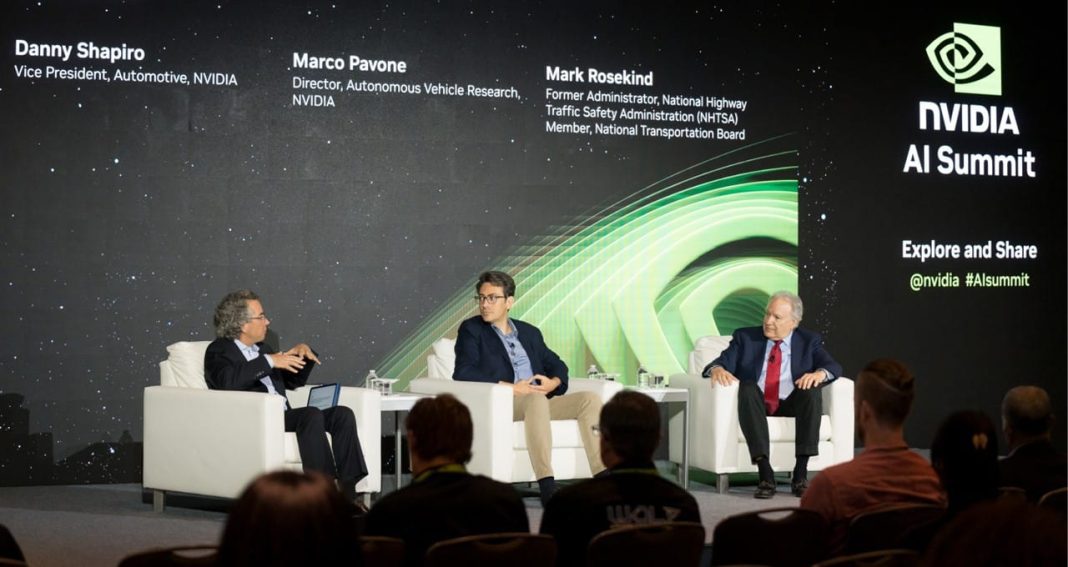The Nvidia AI Summit took place in Mumbai from October 23-25. It gathered tech fans, startup innovators, and AI enthusiasts from across India. Nvidia’s CEO, Jensen Huang, received a star-studded welcome at the event. The summit offered insights into the future of artificial intelligence in India. Huang highlighted Nvidia’s big plans to transform India’s tech landscape. His prediction that “2024 will see 20 times growth in compute capacities in India” made headlines.
Nvidia’s AI Vision for India
The Nvidia AI Summit has marked a critical step in the growing collaboration between Nvidia and India, setting the stage for India’s shift from exporting traditional IT services to exporting cutting-edge AI. To support this vision, Nvidia aims to build infrastructure that will increase India’s AI computing capacity by 20 times. But what does this mean for India’s AI landscape?
AI technology relies on huge volumes of data, which computers analyze, learn from, and use to make intelligent responses. This process is powered by models known as Large Language Models (LLMs), which enable AI systems to understand and respond in human language. AI assistants that understand English, for example, are already common. But with Nvidia’s support, Indian tech firms are setting their sights on building AI systems that understand and speak in Hindi—an essential move to reach more of India’s population.
Creating these Hindi-based AI models isn’t easy, though. Hindi has multiple dialects, which requires extensive data and immense computing power. Companies like Jio have ambitious plans to use these Hindi LLMs, planning to create AI applications like HelloJio Voice Assistant, which responds to Hindi commands, Jio Phonecall AI, which can convert voice conversations into text, and the JioHome app for managing WiFi-connected smart home devices. But these applications depend heavily on high-performance chips—where Nvidia’s role becomes crucial. Nvidia’s advanced chips, like Ampere, Hopper, and Blackwell, reduce costs and improve performance for such large-scale AI tasks.
Nvidia’s Drive for 20x Compute Capacity in India
So, when Nvidia mentions plans to grow India’s compute capacities by 20 times, it refers to more than just processing power. Nvidia aims to deliver the hardware and algorithms that will power India’s data centers and make AI operations faster and more efficient.
Nvidia has already joined hands with major Indian companies to achieve these ambitious goals. These partnerships will ensure that AI and other computational technologies expand rapidly, benefiting industries, businesses, and individuals across the country. Nvidia is working with established Indian companies as well as startups that are building AI applications for various uses in local languages, including Hindi.
One significant partnership is with Reliance, one of India’s biggest names in connectivity. Reliance has a massive data repository but needs advanced computing capabilities to transform this data into useful AI-driven insights. Their goal is to make AI accessible and beneficial for everyone across India by establishing high-powered data centers in Jamnagar, which will be equipped with Nvidia’s GH200 Grace Hopper Superchips and Nvidia’s DGX Cloud. The GH200 Grace Hopper chip provides supercomputing power currently used by AI researchers and developers worldwide. Through these superchips, Reliance’s data centers aim to become more powerful than India’s fastest supercomputer, capable of developing complex AI models and applications.
By using Nvidia’s technology, Reliance will not only meet its own AI needs but will also make these computing resources available to smaller startups. This will allow India’s tech startups to innovate and build Hindi-based AI applications on a large scale, potentially changing the way Indians interact with technology.
Nvidia’s Collaborations with Indian Companies
While Nvidia’s work with Reliance has captured headlines, it has also forged important partnerships with other Indian companies to drive AI innovation and adoption. Here’s a closer look at some of these collaborations:
- Yotta: Nvidia is teaming up with Yotta to create the foundational computing infrastructure needed to support AI development in India. This infrastructure will handle massive data processing requirements and bring more power to the hands of Indian developers and startups working on AI applications.
- Tech Mahindra: Nvidia has partnered with Tech Mahindra to build ‘Indus 2.0,’ an AI model that focuses on Hindi language processing. This project is crucial for reaching a wider Indian audience, as Hindi is one of the most spoken languages in India and has multiple dialects. Tech Mahindra’s AI model aims to bridge the language gap by making AI tools that communicate more naturally with Hindi-speaking users.
- Infosys and Wipro: Nvidia has teamed up with Infosys and Wipro, two of India’s biggest IT service providers. Together, they are creating custom LLMs for enterprise clients. This partnership enables these companies to develop AI solutions tailored to specific business needs. It allows them to offer customized AI services across diverse industries.
- Indian Startups: Nvidia’s impact isn’t limited to large corporations; it also extends to promising Indian startups. Companies like Flipkart, Zoho, and CoRover.ai are working on Hindi-based LLMs to make AI services accessible to local users. These startups are exploring applications in e-commerce, customer support, and personal assistants that understand regional languages, making technology more inclusive and user-friendly.
- IIIT-Delhi Collaboration: Nvidia is also collaborating with IIIT-Delhi on an innovative AI project called AMRSense. This tool uses predictive analytics to monitor antibiotic prescription patterns in local languages. AMRSense can help healthcare providers track antibiotic usage more effectively, potentially contributing to better healthcare outcomes across the country.
Nvidia’s Partnerships Pave India’s AI-Driven Future
Nvidia’s active partnerships with these companies and research institutions are setting the foundation for India’s transition to an AI-driven economy. The company is reportedly also in discussions with the Indian government to co-develop an AI chip. If this collaboration goes through, it will open new doors for AI development in India. Nvidia would gain access to India’s semiconductor design talent, while India would benefit from Nvidia’s advanced chip technology, further enhancing the AI capabilities available in the country.
Through these initiatives, Nvidia is doing much more than increasing computing power. Nvidia is playing a key role in fostering the growth of India’s AI industry. It empowers Indian companies to develop AI applications for the local population. These applications aim to serve people more effectively. With Nvidia’s support, India is advancing as a major player in AI innovation. This brings advanced technology closer to everyday users. It transforms how people interact with digital platforms in their own language.





